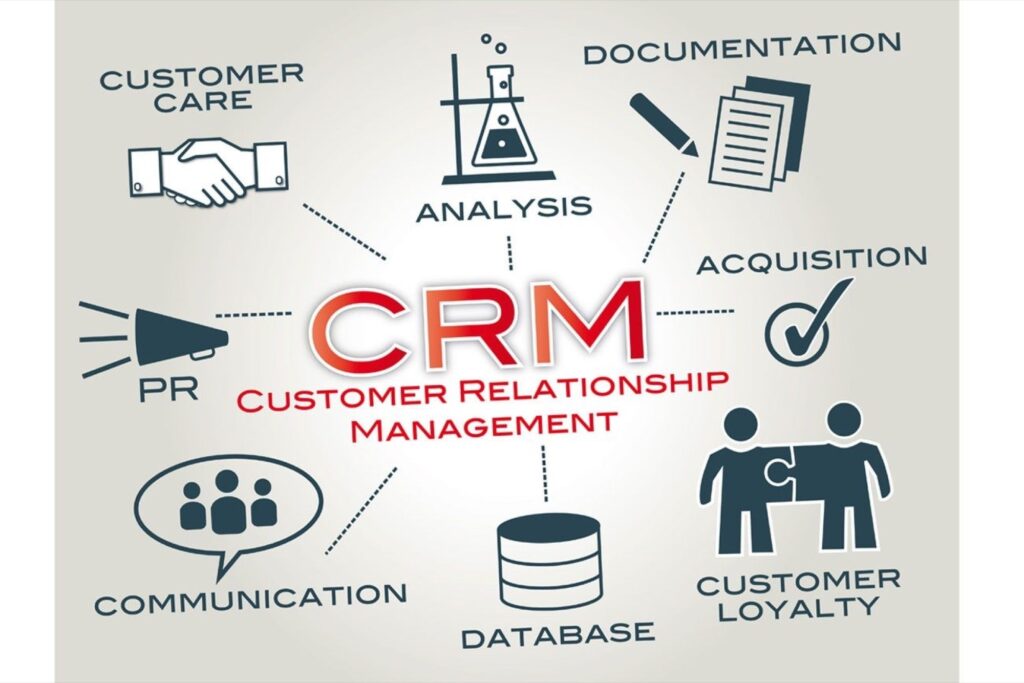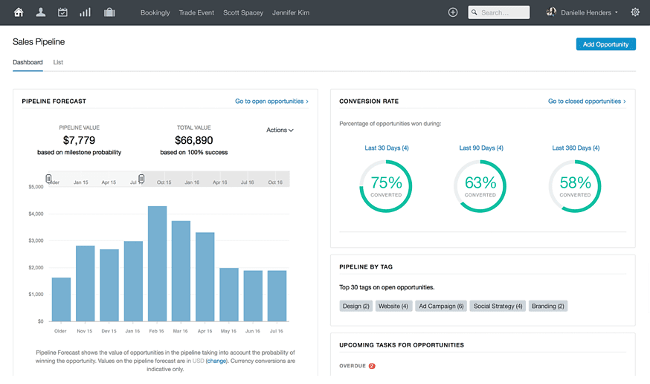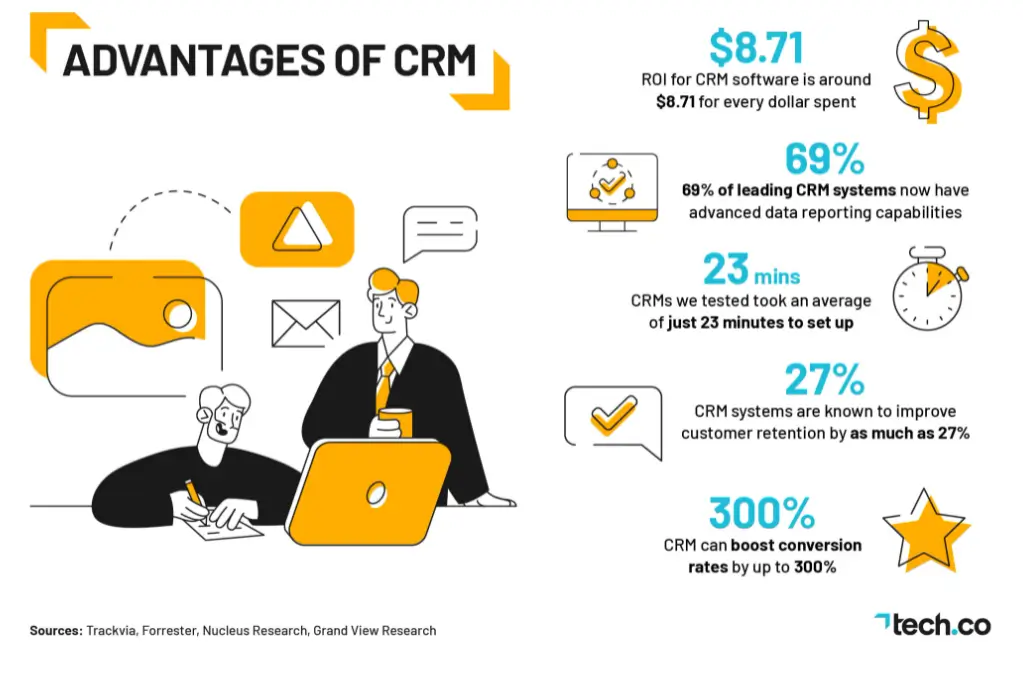
Introduction: The Power of Data in Modern Marketing
In today’s fiercely competitive business landscape, understanding your customer is no longer a luxury; it’s a necessity. Gone are the days of relying solely on intuition and guesswork. The modern marketer thrives on data, and at the heart of this data-driven approach lies Customer Relationship Management (CRM) marketing analytics tools. These powerful platforms are transforming how businesses interact with their customers, personalize experiences, and ultimately, drive revenue growth. This comprehensive guide will delve deep into the world of CRM marketing analytics tools, exploring their capabilities, benefits, and how to choose the perfect solution for your specific needs.
We’ll explore the evolution of CRM, from simple contact management systems to sophisticated platforms that integrate marketing, sales, and customer service. We’ll examine the critical role of data analytics in understanding customer behavior, identifying trends, and optimizing marketing campaigns. Prepare to unlock the potential of your customer data and transform your marketing efforts from reactive to proactive, from guesswork to informed strategy.
Understanding CRM and its Role in Marketing
Before we dive into the specifics of analytics tools, let’s establish a solid foundation in CRM. CRM, at its core, is a strategy for managing all your company’s relationships and interactions with current and potential customers. It involves using technology to organize, automate, and synchronize business processes, primarily to improve sales, target customers, and reduce costs.
The core functions of a CRM system include:
- Contact Management: Storing and organizing customer contact information, including names, addresses, phone numbers, and email addresses.
- Lead Management: Tracking and nurturing potential customers through the sales pipeline.
- Sales Force Automation (SFA): Automating sales tasks, such as lead tracking, opportunity management, and quote generation.
- Marketing Automation: Automating marketing activities, such as email campaigns, social media posting, and lead nurturing.
- Customer Service: Managing customer inquiries, resolving issues, and providing support.
While the basic functions of CRM are valuable in themselves, the true power of CRM lies in its ability to collect and analyze data. This data provides invaluable insights into customer behavior, preferences, and needs. This is where CRM marketing analytics tools come into play, transforming raw data into actionable intelligence.
The Importance of Marketing Analytics
Marketing analytics is the process of collecting, analyzing, and interpreting data to understand the effectiveness of marketing campaigns and initiatives. It provides data-driven insights that can be used to improve marketing performance, optimize resource allocation, and ultimately, drive revenue growth. In the context of CRM, marketing analytics tools leverage the data stored within your CRM system to provide a comprehensive view of your customer base and the performance of your marketing efforts.
Here’s why marketing analytics is so crucial:
- Improved Decision-Making: Data-driven insights enable marketers to make informed decisions about campaign strategies, target audiences, and budget allocation.
- Enhanced Campaign Performance: By tracking key metrics, marketers can identify what’s working and what’s not, allowing them to optimize campaigns for better results.
- Increased ROI: By focusing on the most effective marketing activities, businesses can maximize their return on investment.
- Personalized Customer Experiences: Understanding customer behavior allows marketers to create personalized experiences that resonate with individual customers.
- Competitive Advantage: Businesses that leverage marketing analytics gain a competitive edge by understanding their customers better than their competitors.
Key Features and Capabilities of CRM Marketing Analytics Tools
CRM marketing analytics tools offer a wide range of features and capabilities, designed to help marketers gain a comprehensive understanding of their customers and the effectiveness of their marketing efforts. Here are some of the most important features to look for:
1. Data Visualization and Reporting
Data visualization is the process of presenting data in a graphical format, such as charts, graphs, and dashboards. This makes it easier for marketers to understand complex data and identify trends. Reporting capabilities allow marketers to generate custom reports that provide insights into key performance indicators (KPIs).
2. Customer Segmentation
Customer segmentation is the process of dividing customers into groups based on shared characteristics, such as demographics, behavior, and purchase history. This allows marketers to tailor their marketing messages and campaigns to specific customer segments, resulting in higher engagement and conversion rates.
3. Campaign Tracking and Analysis
This feature allows marketers to track the performance of their marketing campaigns, including metrics such as email open rates, click-through rates, and conversion rates. This data can be used to optimize campaigns and identify areas for improvement.
4. Lead Scoring
Lead scoring is the process of assigning a numerical value to leads based on their behavior and demographics. This helps marketers prioritize leads and focus their efforts on the most promising prospects.
5. Predictive Analytics
Predictive analytics uses historical data to predict future outcomes. In the context of CRM, predictive analytics can be used to forecast customer behavior, identify potential churn risks, and personalize customer experiences.
6. Marketing Automation Integration
Many CRM marketing analytics tools integrate with marketing automation platforms, allowing marketers to automate their marketing activities, such as email campaigns, social media posting, and lead nurturing. This integration streamlines marketing workflows and improves efficiency.
7. Integration with Other Systems
A good CRM analytics tool integrates with other systems, like your website analytics platform (e.g., Google Analytics), social media platforms, and e-commerce platforms. This data integration provides a holistic view of the customer journey.
8. Customization and Flexibility
The best tools allow for customization, enabling you to tailor reports, dashboards, and features to meet your specific business needs. Look for platforms that offer flexibility and can adapt to your evolving marketing strategies.
Benefits of Using CRM Marketing Analytics Tools
Implementing CRM marketing analytics tools can bring about a multitude of benefits for your business, impacting everything from sales and marketing to customer service and overall profitability. Some of the key advantages include:
1. Improved Customer Understanding
CRM analytics tools provide a 360-degree view of your customers, allowing you to understand their behavior, preferences, and needs. This deeper understanding enables you to create more personalized and effective marketing campaigns.
2. Enhanced Marketing ROI
By tracking key metrics and analyzing campaign performance, you can identify what’s working and what’s not, allowing you to optimize your marketing efforts and maximize your return on investment.
3. Increased Sales Efficiency
CRM analytics tools can help you identify and prioritize leads, improve sales forecasting, and streamline the sales process, leading to increased sales efficiency and higher conversion rates.
4. Better Customer Retention
By understanding customer behavior and identifying potential churn risks, you can proactively address customer concerns and improve customer retention rates.
5. Data-Driven Decision-Making
CRM analytics tools provide data-driven insights that empower marketers to make informed decisions about campaign strategies, target audiences, and budget allocation.
6. Improved Collaboration
Many CRM platforms facilitate better collaboration between marketing, sales, and customer service teams by providing a centralized platform for data and insights.
7. Competitive Advantage
By leveraging the power of data, you can gain a competitive edge by understanding your customers better than your competitors.
Choosing the Right CRM Marketing Analytics Tool: A Step-by-Step Guide
Selecting the right CRM marketing analytics tool is a crucial decision that can significantly impact your marketing success. Here’s a step-by-step guide to help you choose the perfect solution for your needs:
1. Define Your Goals and Objectives
Before you start evaluating tools, it’s essential to define your marketing goals and objectives. What do you want to achieve with your CRM analytics tool? Are you looking to improve lead generation, increase sales, enhance customer retention, or all of the above? Having clear goals will help you identify the features and capabilities that are most important to you.
2. Identify Your Needs
Assess your current marketing processes and identify any pain points or areas for improvement. What data do you need to track and analyze? What reports do you need to generate? What integrations are essential for your business? Consider your team’s size, technical skills, and budget when identifying your needs.
3. Research and Evaluate Tools
Once you know your goals and needs, start researching different CRM marketing analytics tools. Read reviews, compare features, and consider the following factors:
- Functionality: Does the tool offer the features and capabilities you need?
- Ease of Use: Is the tool user-friendly and easy to learn?
- Integration: Does the tool integrate with your existing systems and platforms?
- Scalability: Can the tool scale to accommodate your growing business needs?
- Pricing: Does the pricing model fit your budget?
- Customer Support: Does the vendor offer adequate customer support?
4. Consider the Vendor’s Reputation
Research the vendor’s reputation and track record. Read customer reviews and testimonials to get an idea of the vendor’s reliability and customer service.
5. Request Demos and Free Trials
Request demos and free trials of the tools you’re considering. This will allow you to test the tools and see how they work in practice.
6. Implement and Train Your Team
Once you’ve chosen a tool, implement it and train your team on how to use it. Ensure that your team understands how to use the tool effectively and how to interpret the data it provides.
7. Monitor and Optimize
Continuously monitor the performance of your CRM analytics tool and make adjustments as needed. Regularly review your data and reports to identify areas for improvement and optimize your marketing efforts.
Top CRM Marketing Analytics Tools in the Market
The market is saturated with excellent CRM marketing analytics tools. Here are some of the top contenders, each offering unique strengths:
1. HubSpot CRM
HubSpot CRM is a popular choice for businesses of all sizes. It offers a comprehensive suite of features, including contact management, lead generation, marketing automation, and sales tools. Its user-friendly interface and extensive integrations make it a great option for businesses looking for an all-in-one solution.
2. Salesforce Sales Cloud
Salesforce Sales Cloud is a robust CRM platform that offers a wide range of features and customization options. It’s a good choice for larger businesses with complex needs. Its powerful analytics capabilities allow for in-depth data analysis and reporting.
3. Zoho CRM
Zoho CRM is a versatile and affordable CRM platform that’s ideal for small and medium-sized businesses. It offers a wide range of features, including contact management, lead management, and sales force automation. Its user-friendly interface and competitive pricing make it a popular choice.
4. Microsoft Dynamics 365 for Sales
Microsoft Dynamics 365 for Sales is a comprehensive CRM platform that integrates seamlessly with other Microsoft products. It’s a good choice for businesses that already use Microsoft products. Its powerful analytics capabilities and integration with Power BI allow for in-depth data analysis and reporting.
5. Pipedrive
Pipedrive is a sales-focused CRM that’s designed to help sales teams manage their leads and close deals. It offers a user-friendly interface and a visual pipeline that makes it easy to track the progress of deals. Its strong reporting capabilities provide valuable insights into sales performance.
Note: The best tool for you will depend on your specific needs and budget. It’s crucial to research and compare different tools before making a decision.
Best Practices for Using CRM Marketing Analytics Tools
Implementing a CRM marketing analytics tool is just the first step. To maximize its value, you need to follow best practices. Here are some key strategies to ensure you get the most out of your investment:
1. Clean and Accurate Data
The quality of your data is paramount. Regularly clean and update your data to ensure its accuracy. Inaccurate data can lead to flawed insights and poor decisions. Implement data validation rules and processes to maintain data integrity.
2. Define Key Performance Indicators (KPIs)
Identify the KPIs that are most important to your business goals. Track these KPIs regularly to monitor your progress and identify areas for improvement. Examples of KPIs include:
- Conversion rates
- Customer acquisition cost (CAC)
- Customer lifetime value (CLTV)
- Churn rate
- Website traffic
- Lead generation
3. Segment Your Audience
Use your CRM analytics tool to segment your audience based on various characteristics, such as demographics, behavior, and purchase history. This will allow you to tailor your marketing messages and campaigns to specific customer segments.
4. Personalize Your Marketing
Use the data from your CRM analytics tool to personalize your marketing messages and campaigns. This includes personalizing email content, website content, and product recommendations.
5. Automate Your Marketing Activities
Leverage the marketing automation capabilities of your CRM analytics tool to automate repetitive tasks, such as email campaigns, social media posting, and lead nurturing. This will free up your time to focus on more strategic initiatives.
6. Analyze Your Data Regularly
Regularly analyze your data and reports to identify trends, patterns, and insights. Use this data to optimize your marketing efforts and make data-driven decisions.
7. Test and Experiment
Continuously test and experiment with different marketing strategies and tactics. Use A/B testing to compare different versions of your marketing messages and campaigns. This will help you identify what’s working and what’s not.
8. Train Your Team
Ensure that your team is properly trained on how to use the CRM analytics tool and how to interpret the data it provides. This will help them make informed decisions and maximize the value of the tool.
9. Stay Updated
The marketing landscape is constantly evolving. Stay up-to-date on the latest trends and technologies in CRM marketing analytics. Regularly review your tool and its features to ensure you’re leveraging its full potential.
Challenges and Considerations
While CRM marketing analytics tools offer numerous benefits, there are also challenges and considerations to be aware of:
1. Data Privacy and Security
Protecting customer data is paramount. Ensure that your CRM analytics tool complies with data privacy regulations, such as GDPR and CCPA. Implement security measures to protect customer data from unauthorized access.
2. Data Integration Complexity
Integrating your CRM analytics tool with other systems can be complex. Carefully plan your data integration strategy and ensure that all systems are compatible.
3. Data Silos
Avoid creating data silos, where data is isolated in different systems. Ensure that your data is integrated across all systems to provide a holistic view of your customers.
4. Training and Adoption
Proper training and user adoption are essential for the success of your CRM analytics tool. Provide adequate training to your team and encourage them to use the tool effectively.
5. Cost
CRM analytics tools can be expensive. Carefully consider your budget and choose a tool that fits your needs and your financial constraints.
Future Trends in CRM Marketing Analytics
The field of CRM marketing analytics is constantly evolving. Here are some future trends to watch out for:
1. Artificial Intelligence (AI) and Machine Learning (ML)
AI and ML are transforming the way businesses use data. AI-powered CRM analytics tools can automate tasks, predict customer behavior, and personalize customer experiences. Expect to see more AI and ML features in CRM analytics tools in the future.
2. Enhanced Personalization
Personalization will continue to be a major focus. CRM analytics tools will provide even more sophisticated capabilities for personalizing customer experiences, such as dynamic content, personalized product recommendations, and tailored marketing messages.
3. Mobile CRM
Mobile CRM will become increasingly important. Businesses will need to be able to access and analyze customer data on the go. Expect to see more mobile-friendly CRM analytics tools and features.
4. Integration with IoT
The Internet of Things (IoT) is generating vast amounts of data. CRM analytics tools will need to integrate with IoT devices to collect and analyze data from connected devices, such as smart home devices and wearable technology.
5. Focus on Customer Experience
The customer experience will continue to be a major priority. CRM analytics tools will provide even more capabilities for understanding and improving the customer experience.
Conclusion: Embracing the Power of Data
CRM marketing analytics tools are no longer optional; they are essential for businesses that want to thrive in today’s data-driven world. By leveraging the power of data, you can gain a deeper understanding of your customers, optimize your marketing efforts, and drive revenue growth. Whether you’re a small business owner or a marketing executive, the insights gleaned from these tools can transform your approach and propel your company forward.
By following the guidance in this comprehensive guide, you can choose the right tool, implement it effectively, and unlock the full potential of your customer data. Embrace the power of data, and watch your marketing efforts transform from guesswork to a finely tuned engine for growth. The future of marketing is here, and it’s powered by data. Start your journey today and witness the remarkable impact that CRM marketing analytics tools can have on your business. The insights are waiting; are you ready to listen?


